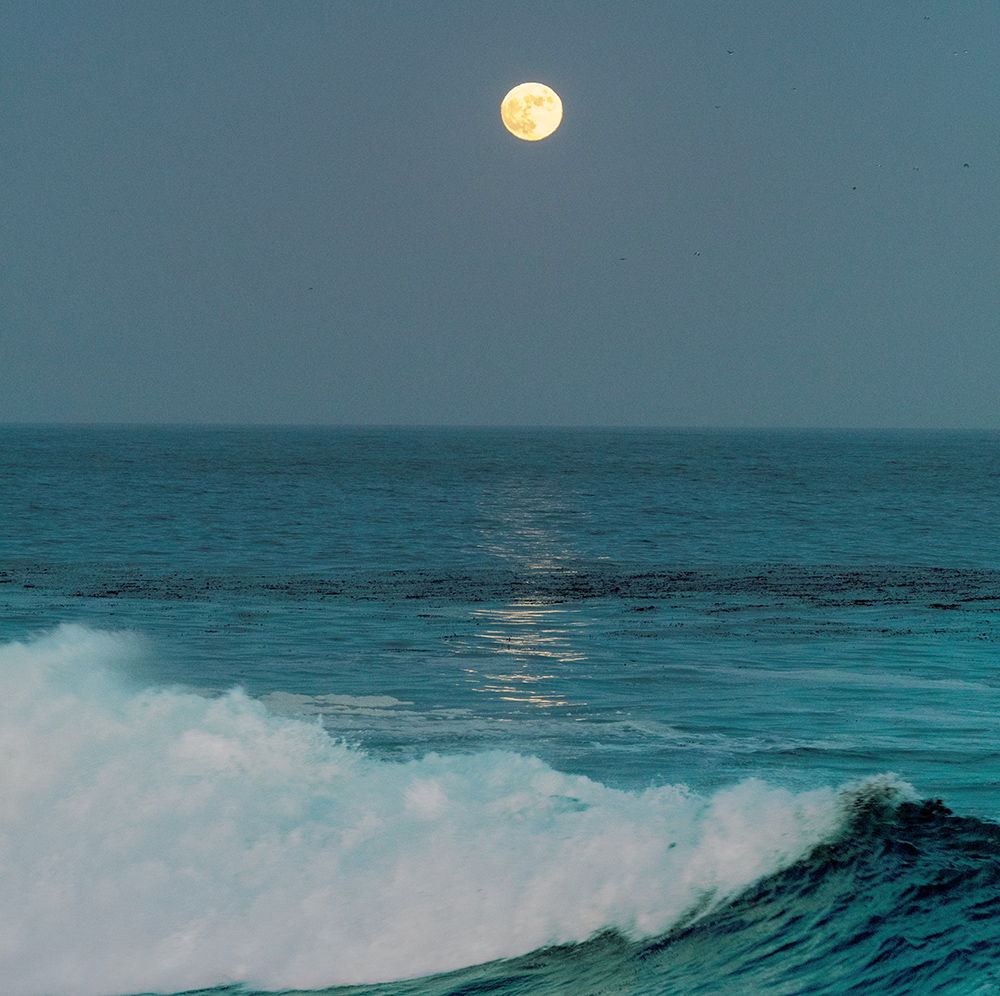By Sarah Fertsch
Staff Writer
Calling all science enthusiasts! Do you ever wonder what makes the ocean move? How do tides work? What makes waves? Read on to sate your curiosity about our amazing ocean.
It all comes down to the moon. The moon has its own gravitational pull that’s less powerful than ours, but it has a great effect on our atmosphere and environment. The gravitational pull from the moon produces something called the tidal force. As the moon rotates around the earth, water moves closer to the side where the moon is. This is called high tide.
The tide rises and falls twice per day, just as the moon passes by your location on earth and moves further away. The highest tides occur when the moon is full or new. High tides always occur either directly before or after the moon is at its closest to our part of the earth (when it’s directly overhead). The tides run on a 24 hour and 50-minute cycle, meaning some parts of the earth only experience the tide going in and out once per day. Twice per month, the high tide and low tide are at their closest point, almost reaching the same point. That’s called neap tide.
The eastern side of the planet experiences high tide when the western side of the earth experiences low tide. Each side will likely experience high and low tide twice per day.
The sun causes tides too, but on a less extreme level. Sometimes the solar and lunar tides reinforce each other, leading to bigger waves and higher tides, called the spring tide. When they work against each other, neap tides occur. During a solar and lunar eclipse, the tides range in both extremes.
Waves are the product of the moon, too. Since the moon is so close to the earth, its gravitational pull (or tidal force) pulls water closer to itself. Waves are waters reaching for the moon. When the moon is directly overhead, waves are bound to be larger in size. Likewise, when the moon is on the other side of the earth, waves tend to be minimal. The gravitational pull of the moon affects creatures on land as well, but the effects are very little. Scientists can only tell by using very precise instruments.

Of course, wind affects waves as well. High winds push the water up and out, leading to higher tide and larger waves. That’s why you’ll see so many surfers racing toward the ocean during hurricanes. Storm systems create high winds, leading to stronger waves. It’s important to be careful when the tide is at its highest and waves look huge because the power of the ocean can overtake you and become dangerous!
Both humans and animals rely on the tidal system to live and thrive, so it’s important to keep the waters clean and practice safety around the ocean and bay. Although it’s not a perfect system (landmasses create disruption that affects waves and tides), it has been working for millennia. On your next beach trip, be sure to appreciate how the earth, moon, and sun work together to create the glorious tide and waves.










